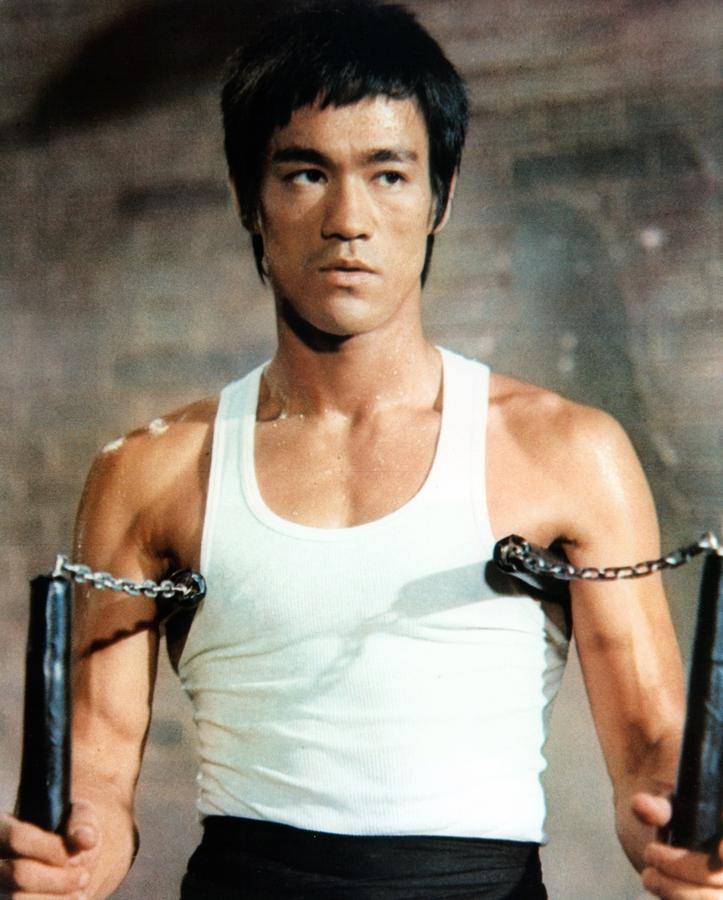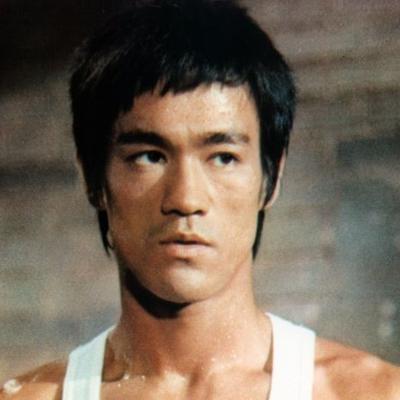Bruce Lee at a Glance
- Categories: Celebrities > Actors, Celebrities
- Net Worth: $10 Million
- Birthdate: Nov 27, 1940 - Jul 20, 1973 (32 years old)
- Birthplace: Chinatown
- Gender: Male
- Profession: Actor, Screenwriter, Film director, Martial Arts Instructor, Philosopher, Film Producer, Martial Artist
- Nationality: United States of America
- Height: 5 ft 7 in (1.71 m)
Bruce Lee’s Net Worth: A Legacy Beyond Measure
Bruce Lee, a name synonymous with martial arts, cinematic innovation, and cultural influence, left an indelible mark on the world. Beyond his on-screen prowess and revolutionary fighting style, understanding Bruce Lee involves appreciating his financial success and the lasting impact he created. This article delves into Bruce Lee’s net worth, providing a detailed look at his life, career, and the enduring legacy that continues to inspire generations.
Early Life and Influences
Born Lee Jun-fan in San Francisco, California, on November 27, 1940, Bruce Lee’s early life was a blend of cultures and experiences. His parents, Grace Ho and Lee Hoi-chuen, returned to Hong Kong shortly after his birth. His father, a prominent Cantonese opera star, introduced young Bruce to the world of performing arts, laying the foundation for his future career. This early exposure to the arts, combined with the bustling environment of Hong Kong, shaped his dynamic personality.
Bruce Lee’s journey into the world of entertainment began at a very young age. He appeared in his first film, “Golden Gate Girl,” as a baby in 1941. By the time he was eighteen, he had already acted in twenty films. This early experience on film sets undoubtedly honed his skills and prepared him for the international stardom that awaited him. His experiences in the Hong Kong film industry provided him with an early foundation in acting and performance.
The Path to Martial Arts Mastery
As a teenager, Bruce Lee’s involvement in street fights led his parents to seek a more structured outlet for his energy. At the age of sixteen, he began studying Wing Chun under the renowned master Yip Man. This training was pivotal in shaping his martial arts philosophy and physical abilities. Lee’s dedication to Wing Chun helped him develop a strong base. He combined discipline with his natural talent and a relentless pursuit of self-improvement.
In 1959, Lee returned to the United States, living with his sister in San Francisco before settling in Seattle. There, he completed his high school education and later attended the University of Washington, though he eventually left to pursue his passion. During his time in the US, he continued to refine his martial arts skills and share his knowledge, opening the Jun Fan Gung Fu Institute in Seattle.
Hollywood and the Rise to Fame
Bruce Lee’s martial arts demonstrations in California caught the attention of television producer William Dozier. This led to an audition, though the pilot was not picked up, Dozier saw potential in Lee. He saw potential in him and helped him secure roles, opening doors to Hollywood. This marked the beginning of Lee’s transition into the American entertainment industry.
In 1966, Lee gained mainstream recognition as Kato in the television series “The Green Hornet.” While the show only lasted one season, it was a groundbreaking platform for showcasing Asian-style martial arts. This role made him a familiar face to audiences across the country, solidifying his status as an actor. The role of Kato was a groundbreaking moment for Asian representation in American television.

(Photo by Getty Images)
The Philosophy of Jeet Kune Do
Frustrated with limited roles, Lee developed a new fighting system called Jeet Kune Do. It focused on practicality and adaptability, designed for street fighting. Jeet Kune Do (JKD) was not a rigid style, but a philosophy. It encouraged practitioners to use whatever techniques were most effective in a given situation. This approach went against the traditional martial arts. It involved adapting and improving techniques from various sources. His innovative system is now recognized as a precursor to modern mixed martial arts (MMA).
Lee’s teachings emphasized the importance of self-awareness and the elimination of unnecessary movements. This philosophy extended beyond martial arts. It was a way of life, advocating for simplicity, directness, and personal growth. JKD’s adaptability and effectiveness resonated with many, leading to its widespread adoption and influence in martial arts training. His ideas promoted individuality and the constant pursuit of improvement. This contributed to his lasting impact on martial arts.
Film Career and Global Impact
Lee returned to Hong Kong, where “The Green Hornet” had been a massive success. His fame led to a contract with Golden Harvest. This resulted in the films “The Big Boss” (1971) and “Fist of Fury” (1972), which were huge box office hits. His success gave him more creative control. He was able to negotiate a new deal with Golden Harvest, which also included the formation of his own production company, Concord Production Inc.
For “Way of the Dragon” (1972), Lee took on multiple roles: writer, director, star, and fight choreographer. The film featured a memorable fight scene with Chuck Norris. This demonstrated Lee’s versatility and his ability to create compelling cinematic experiences. He showcased his talent in every aspect of filmmaking. His films broke box office records and earned him worldwide acclaim. He became a global icon.

(Photo by Warner Brothers/Getty Images)
The film “Enter the Dragon” (1973) was a co-production with Warner Brothers. The film was released shortly after Lee’s death. It grossed approximately $350 million worldwide. It demonstrated the enduring power of his appeal and cemented his legendary status. His films have had a lasting influence on action cinema. It also highlighted his contributions to the development of martial arts and film.
Untimely Death and Enduring Legacy
On July 20, 1973, at the age of 32, Bruce Lee passed away unexpectedly. The official cause of death was cerebral edema, a condition he had previously experienced. His death was sudden and shocking. It left his fans and the world in mourning. It also fueled the myth and legend that surrounds his name.
Despite his short life, Bruce Lee’s impact on martial arts and popular culture is immeasurable. He popularized martial arts in the West. He also inspired countless individuals to pursue fitness and self-improvement. His philosophy of Jeet Kune Do has influenced many. It continues to be studied and adapted by martial artists today. His influence can be seen in film, television, and the world of sports. Bruce Lee’s teachings and his dedication to excellence. He remains a timeless icon whose message of self-discovery resonates with people worldwide. His legacy is a powerful testament to his vision.
Bruce Lee’s Net Worth Today
At the time of his death in 1973, Bruce Lee’s net worth was estimated to be $10 million (adjusted for inflation). This figure reflects his earnings from his films. It also reflects the success of his martial arts schools, and other ventures. This also takes into account his impact on pop culture and film.
Bruce Lee’s financial success, combined with his cultural influence, shows his lasting importance. His image, his name, and his likeness continue to generate revenue. It speaks to the enduring appeal of his brand. His films are still watched and studied by film enthusiasts. His ideas continue to influence culture and martial arts. He continues to be a source of inspiration. His legacy is measured not only in monetary terms but also in the profound cultural influence. It extends his message of self-improvement.
Bruce Lee’s legacy includes his family. His son, Brandon Lee, was also an actor. He died tragically at a young age. His daughter, Shannon Lee, has worked to preserve and promote her father’s legacy. She runs the Bruce Lee Foundation. It is dedicated to preserving his philosophies. She actively works to promote her father’s work. She has written books and worked on various projects to keep her father’s memory alive. She ensures that his contributions are recognized.
Bruce Lee’s financial success laid the groundwork for his influence. It ensures that his work continues to reach new audiences. His life continues to inspire. He continues to be remembered as a martial artist and a cultural icon.
Conclusion
Bruce Lee’s life was a remarkable journey marked by a dedication to martial arts, film, and personal philosophy. From his early beginnings to his untimely death, his story is one of relentless pursuit of excellence. His net worth, while significant, is only a part of his legacy. His true value lies in his impact on the world. His impact continues to resonate. Bruce Lee’s story continues to inspire generations. He is a symbol of resilience, self-improvement, and the enduring power of human potential.

